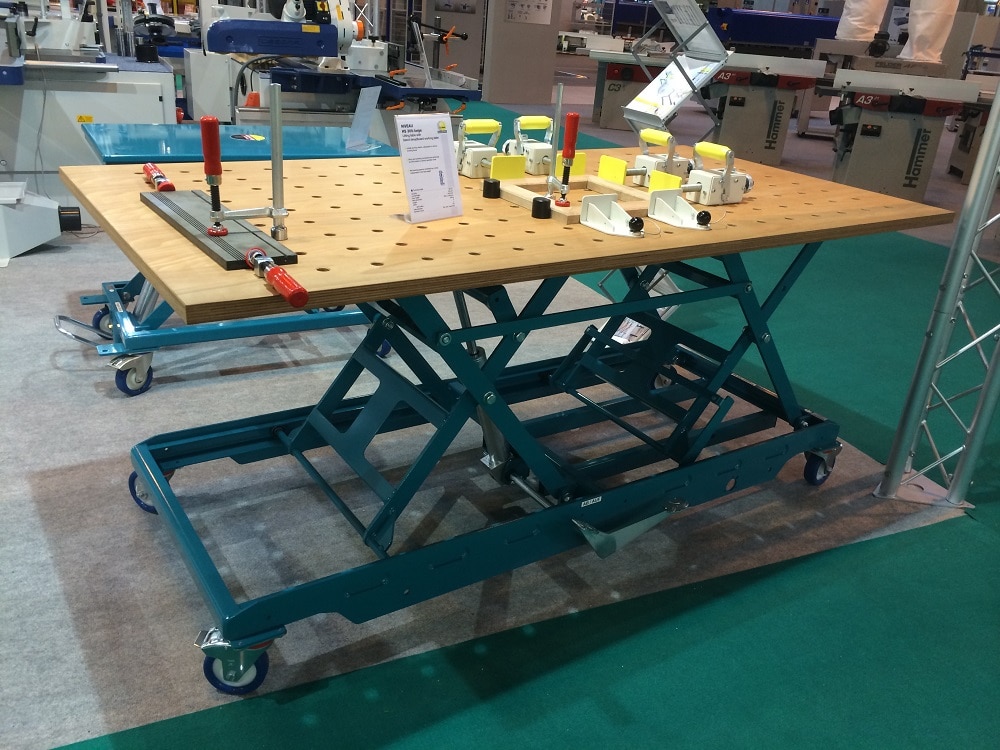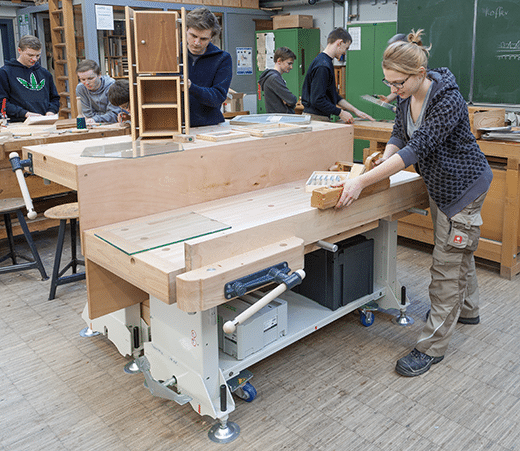Whilst lifting any sort of heavy materials or machinery, it is important to use the correct lifting and handling equipment. Not only is this a much more productive way to work, it also avoids the risk of injury and ensures that you are in full compliance with the Lifting Operations and Lifting Equipment Regulations 1988 – know as LOLER for short.
In this article, we will discuss the importance of lifting and handling equipment, and how it can be used to improve workplace productivity and ensure compliance with industry regulations.
IMAGE: WOODWORKING MACHINERY
Lifting Equipment Is Efficiency
Lifting and handling equipment could be viewed as a drain on resources, or even an inconvenience – especially when it is time to update and fork out on new equipment. However, it should be viewed as an integral part of the workplace environment.
Whether you require lifting and handling equipment for everyday use, or just for the occasional delivery. Lifting equipment can greatly improve efficiency, allowing fewer employees to transport larger loads in a quicker period of time. These loads can then arrive at the intended destination on time and without risk of damage to the items.
Using fewer employees to transport goods or materials also frees time up that can be focused on other areas of the business. Allowing for more time spent on producing products, finishing projects, or any other task.
Avoid Injury
Much like the goods, materials or machines being transported, lifting and handling equipment can prevent the risk of damage to employees. Reducing the risk of injury to employees can only be a good thing; injured employees are unable to work, greatly reducing workplace efficiency and putting added pressure on other employees.
On top of this, working in an environment that is prone to injury, naturally carries with it low morale. Low morale breeds complacency and lack of respect, resulting in decreased service level that could directly impact your company’s reputation.
You may also be breaking the law.
Compliance With Regulations
Under Section 2 of the Health and Safety at Work etc Act 1974 (HASAW), it is the duty of every employer to ensure, so far as is reasonably practicable, the health, safety, and welfare at work of all his employees. This naturally covers risks of injury due to lack of, or inadequate lifting and handling equipment – and failure to comply could result in a lawsuit.
As mentioned in the introduction, the Lifting Operations and Lifting Equipment Regulations 1988 (LOLER) set a standard for lifting and handling that MUST be followed within the workplace. It requires all lifting operations that involve lifting equipment (specified as anything over a reasonable weight for an individual to carry) must be properly planned by a competent individual, appropriately supervised and carried out in a safe manner.
Lifting and handling equipment must also comply with the Provision and Use of Work Equipment Regulations 1998 – known at PUWER for short. These regulations aim to make the workplace safer, ensuring that all equipment meets certain standards. They ensure that all equipment is suitable for its intended purpose, regularly maintained, only used by people who have received the correct training, and has been inspected by a competent worker.
What’s Next?
If you believe that your workplace has incorrect, inadequate or indeed no lifting and handling equipment, then it is time to take action. Review your existing equipment immediately and come to a determination on exactly what your workplace requires to improve efficiency, reduce the risk of injury, and ensure compliance with relevant regulations.
Then look for a reputable supplier to purchase the required lifting and handling equipment.
If you are interested in even more lifestyle-related articles and information from us here at Bit Rebels then we have a lot to choose from.


COMMENTS